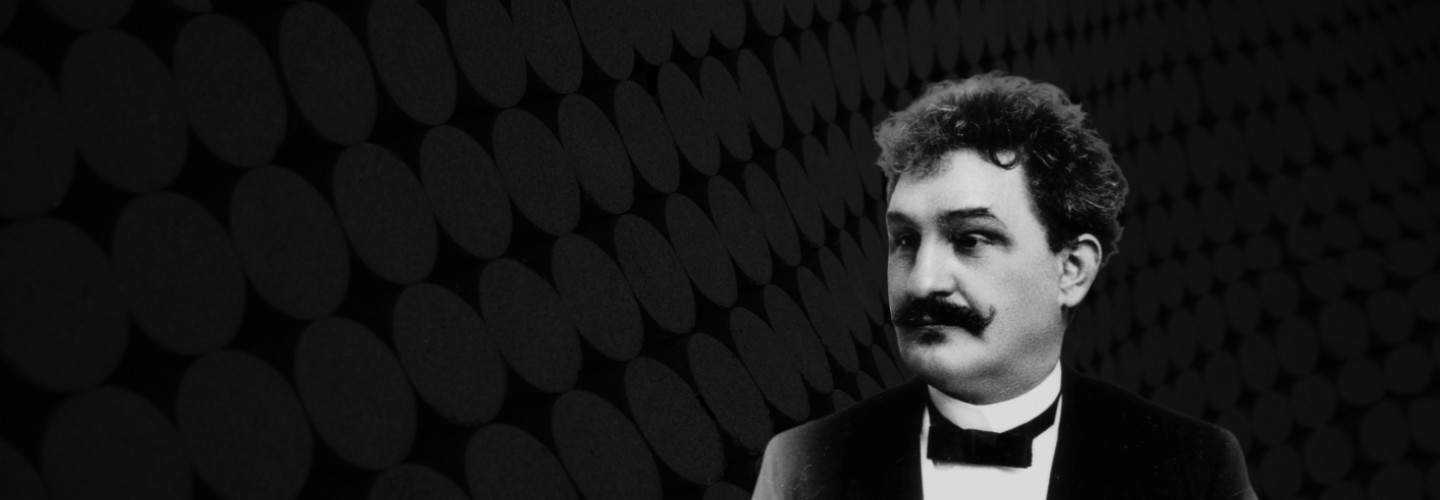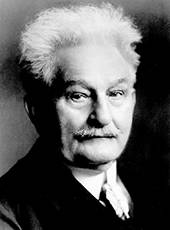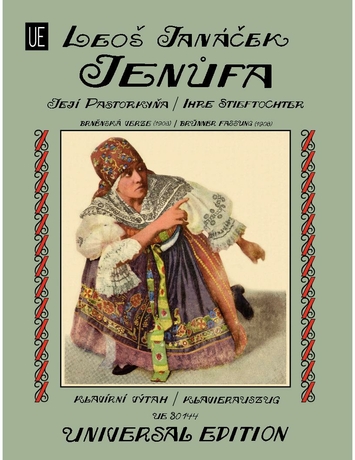

Leoš Janáček
Jenufa, her Stepdaughter
Short instrumentation: 3 3 3 3 - 4 2 3 1 - timp, perc(2), bells, hp, str - stage music: hn(2), toy tpt, xyl, bells, str(1 1 1 1 1)
Duration: 120'
Übersetzer: Edward Downes, Otakar Kraus, Vida Harford, Max Brod
Herausgeber: Sir Charles Mackerras, John Tyrrell
Libretto von: Gabriela Preissová
Dedication: im Angedenken an Olga Janácková
Choir: SATTBB: villagers, recruits, musicians, servants, village girls
Roles:
Grandmother Buryja
alto Kostelnicka Buryja
soprano Jenufa
soprano Laca Klemen
tenor Steva Buryja
tenor Foreman
baritone The Mayor
bass His Wife
mezzo-soprano Karolka
mezzo-soprano Herdswoman
mezzo-soprano Barena
soprano Jano
soprano Aunt
alto
Instrumentation details:
piccolo (+3rd fl)
1st flute (+picc)
2nd flute (+picc)
1st oboe
2nd oboe
cor anglais
1st clarinet in Bb (+cl(A))
2nd clarinet in Bb (+cl(A))
bass clarinet in Bb
1st bassoon
2nd bassoon
contrabassoon
1st horn in F
2nd horn in F
3rd horn in F
4th horn in F
1st trumpet in F (+tpt(C))
2nd trumpet in F (+tpt(C))
1st trombone
2nd trombone
3rd trombone
tuba
timpani
percussion (2 players: xylophone, glockenspiel, bells, triangle, cymbal (suspended)
also xylophone cont.aind the scene)
harp
violin I
violin II
viola
violoncello
contrabass
stage music: 1st horn in F
2nd horn in F
toy trumpet in C
bells
violin I(1)
violin II(1)
viola(1)
violoncello(1)
contrabass(1)
Janácek - Jenufa
Printed/Digital
Translation, reprints and more

Leoš Janáček
Janácek: JenufaType: Dirigierpartitur
Language: Deutsch | Englisch | Tschechisch
Binding: Hardcover

Leoš Janáček
Janácek: JenufaType: Studienpartitur
Language: Deutsch | Englisch | Tschechisch


Sample pages
Audio preview
Work introduction
With his third opera Jenufa Leoš Janácek succeeded in making his breakthrough as an operatic composer. Since the premiere of this moving story about the fate of the sexton and her stepdaughter Jenufa at the Brno National Theatre in 1904, it has become one of the composer’s most frequently performed works. Janácek was the first to succeed in transforming everyday speech directly into music. His method of using speech-melodic motives is clearly distinctive. It is known that the composer preserved everyday conversations in the form of little musical sketches: ‘Jotting down genuine speech melody is, as it were, music’s life class,’ he said.
